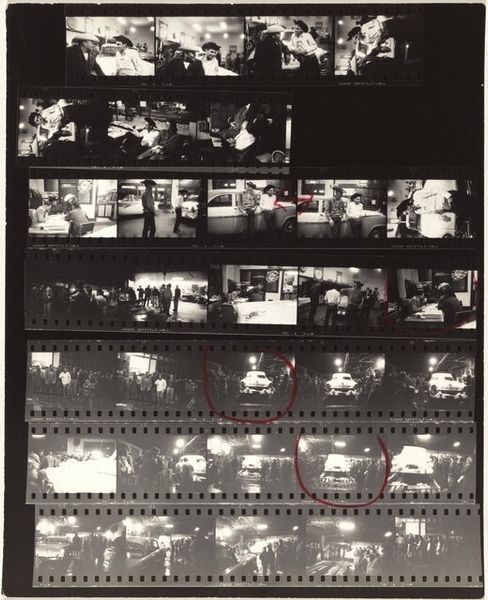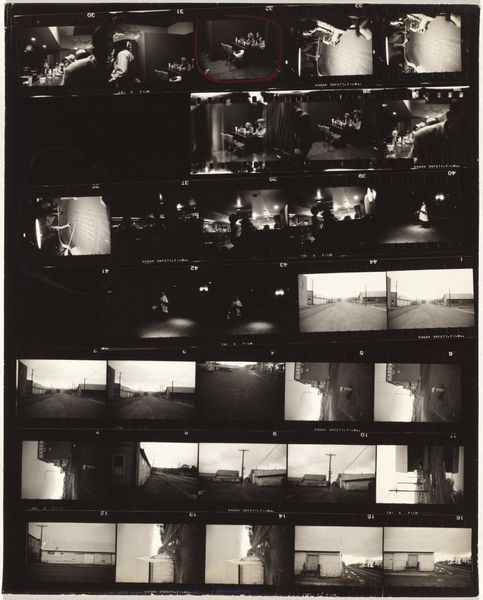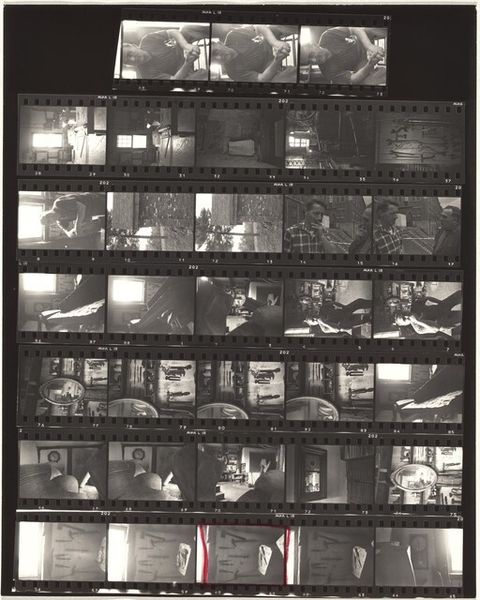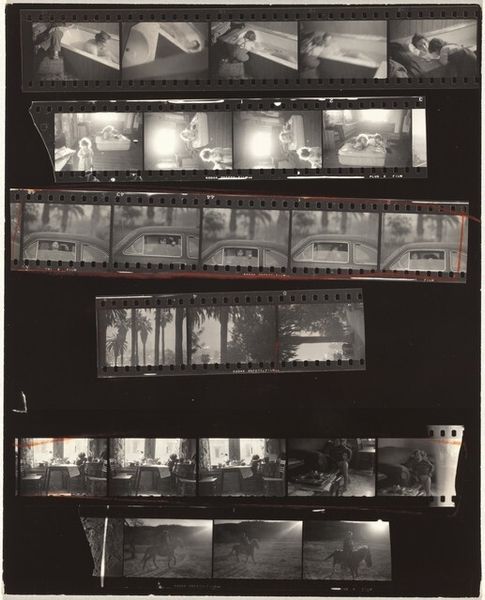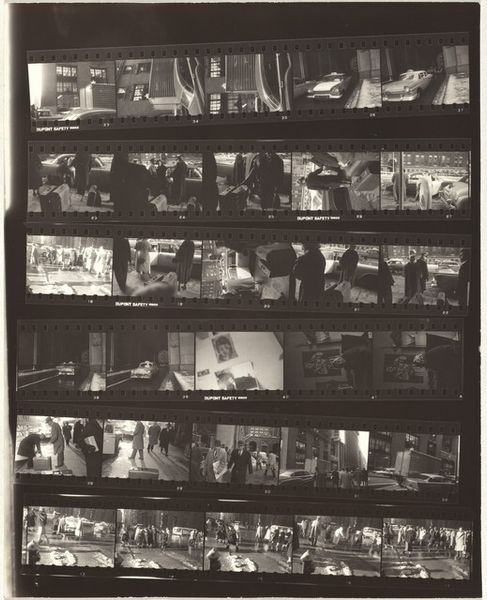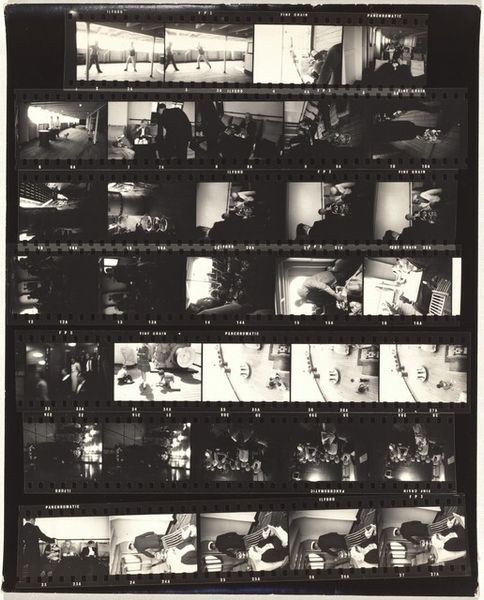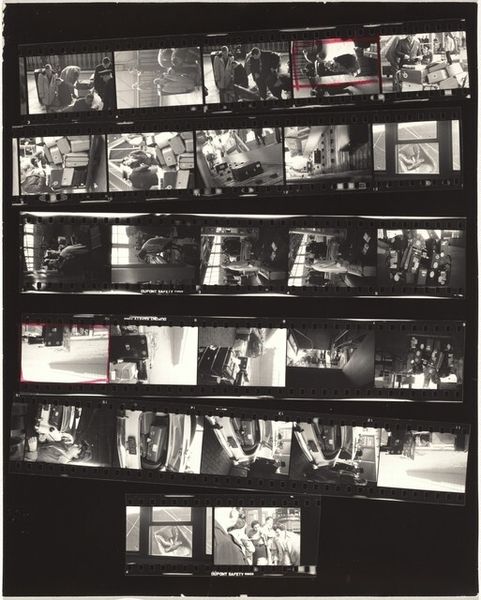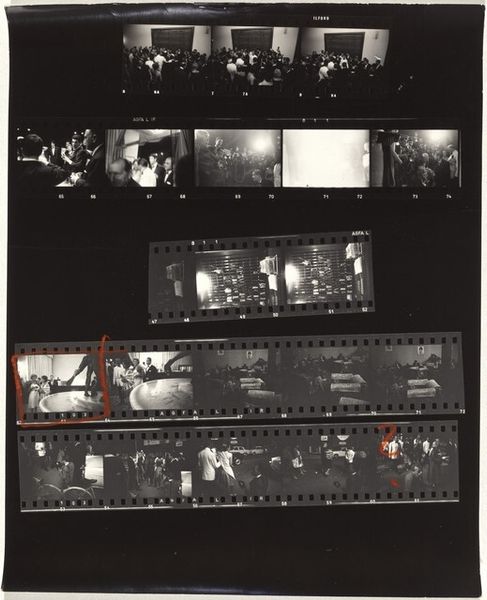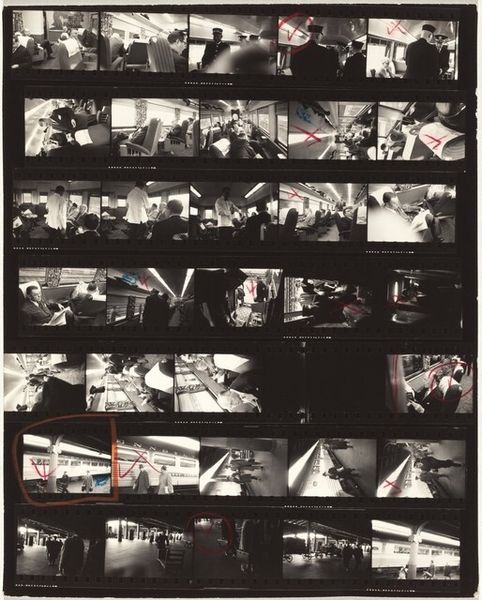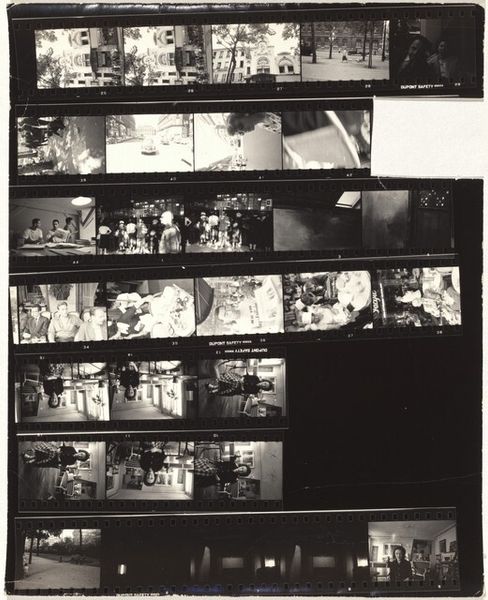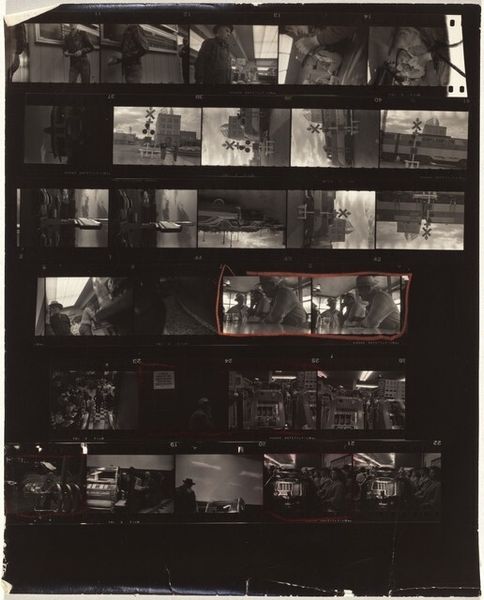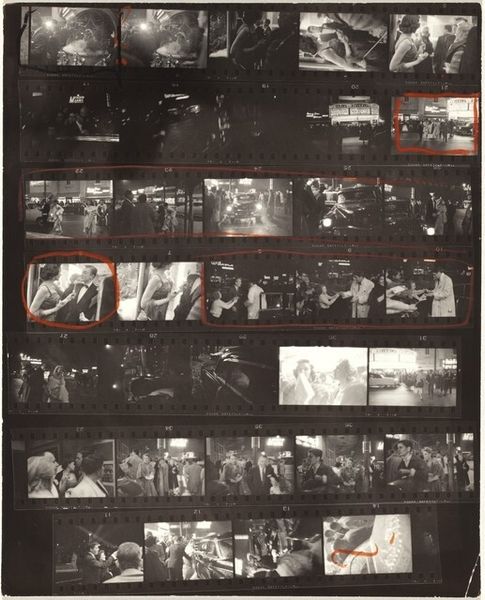
print, photography, gelatin-silver-print
#
portrait
# print
#
street-photography
#
photography
#
group-portraits
#
gelatin-silver-print
#
modernism
#
realism
#
monochrome
Dimensions: overall: 25.2 x 20.2 cm (9 15/16 x 7 15/16 in.)
Copyright: National Gallery of Art: CC0 1.0
Curator: Robert Frank's gelatin silver print, "Venice, Italy 24" from 1964, offers a raw glimpse into a specific moment. The contact sheet format allows us to glimpse not just one selected image, but many moments considered by the artist. Editor: Immediately, I'm struck by the texture. It is very tactile. You see the grain of the film, and the ink sits heavily on the surface of the print. I imagine Frank carefully assessing each of these potential shots. Curator: Indeed. The images themselves are arranged as one might experience time; multiple panels showcasing different scenes one after the other. In one marked section we see blurry shots of individuals with dark clothing with an almost ghostly glow on the figures in front of a brighter background. Given Frank's interest in capturing the "American condition" abroad, how might this reflect the continuity of alienation and disillusionment through cultural lenses? Editor: Considering that the image presents itself as a contact sheet with what appear to be marked selections, the medium itself feels almost like the discarded blueprints, the raw materials of a larger vision or production. The labor of observation is baked into the format. But in a deeper consideration the selection method becomes apparent. Curator: It begs the question, doesn't it, of what informs artistic choice? Even with the apparent spontaneity that characterizes much of Frank's work, these photographs hint at carefully selected motifs. Are there particular sections you find more evocative? Editor: I am drawn to the imagery within, I cannot help but linger on what appears to be social gatherings, but Frank does not show unadulterated joy and it appears to take place somewhere else. This is street photography at its most subtle: he’s observing systems of interaction, documenting not just who is there, but how they are engaging, but also perhaps, their psychological distance, how people engage to attempt joy even while separated. He does all this, while focusing on production methods, not as ends in themselves, but as integral parts of meaning. Curator: Ultimately, I see the work not simply as an artistic exercise, but as a way to challenge our perceptions, even now decades after Frank pressed the shutter. We're invited to become observers ourselves. Editor: Yes, and by laying bare the tools and choices, he empowers us to consider the layers of construction in image-making itself, which is far more powerful, still, today.
Comments
No comments
Be the first to comment and join the conversation on the ultimate creative platform.
